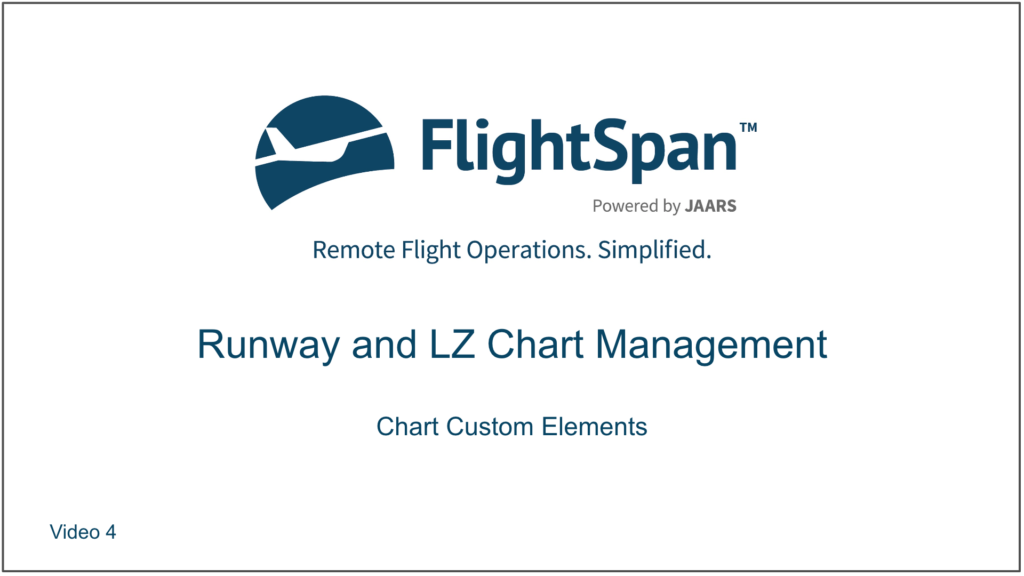If a custom element is needed to build your chart, select Chart Custom Elements from the Runway Charts menu and then click the green New button.

Name the element, then decide on its scope.
- Company scope will apply the same data to all runway and LZ charts for your company. Examples of this scope would be a disclaimer, copyright notice, or table header.
- Airport scope applies the data to a given airport or LZ. Examples of this scope include airport name and identifier, elevation, and frequency.
- Runway scope applies the data to a particular runway at the airport. Examples include slope, length, width, and surface. Note: LZ charts should not use this scope.
- Aircraft Type scope is different for each aircraft type at a given airport. Examples include runway checkout training requirements or target max torque for a particular aircraft type.
- Aircraft Type and Runway scope is used for a particular aircraft type and runway combination. Examples include weight limitations and committal points and procedures.
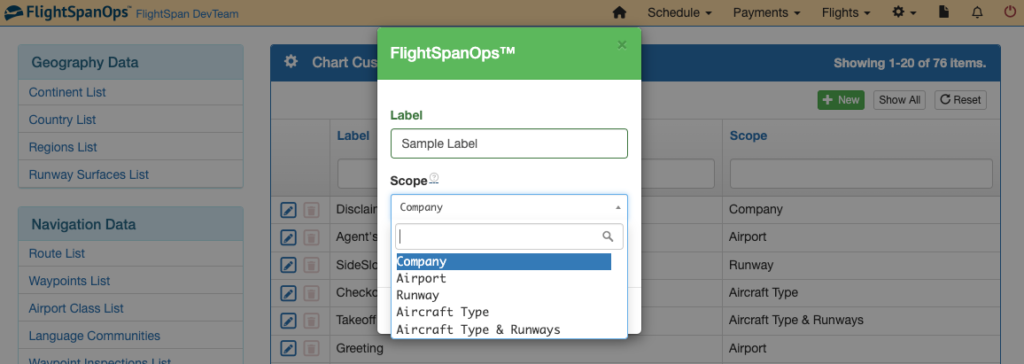
If you need a reminder of the scope meanings, hover over the question mark
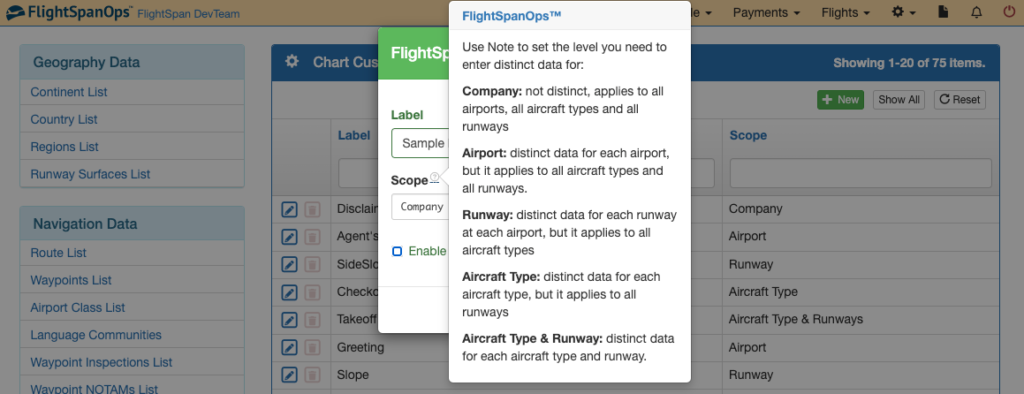
Next decide if you need enhanced text formatting such as bulleted or numbered lists, italics, etc.

Enhanced text formatting adds formatting tools to the cell. You won’t see them in the Charts Layout Builder, but on the Runway Chart Details editing page, for cells with the pencil icon in the lower right corner, the formatting tools will be visible after clicking on the pencil or on the text in the box.
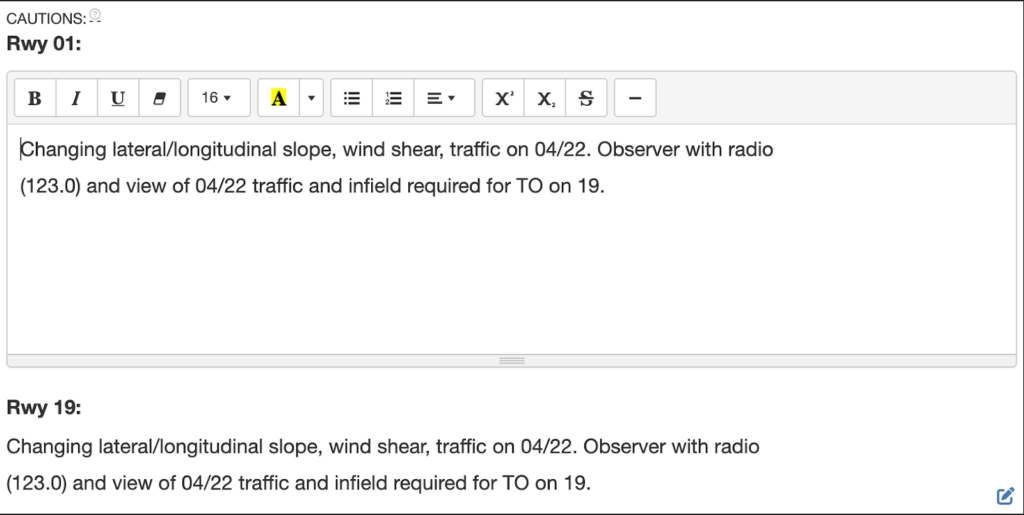
It won’t hurt to add them, since they don’t change the appearance of the layout except when editing that box. You can always come back later and uncheck the Enhanced Text Formatting box if you decide you don’t need enhanced formatting. You will get a warning that all formatting will be lost.
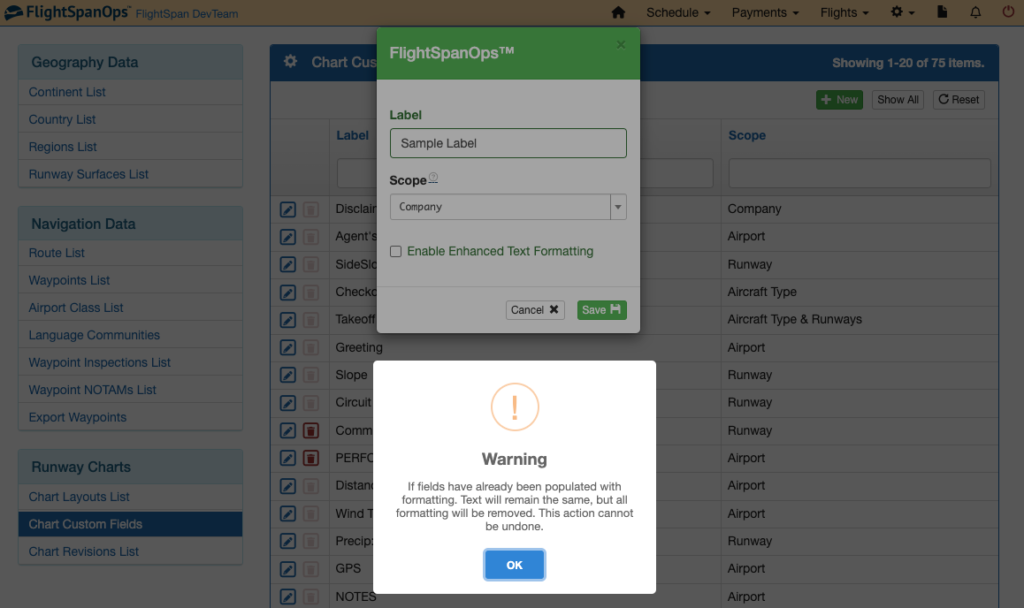
When you save, the new element will be added to the Custom Elements list on the Chart Layout Builder under the chosen scope heading.
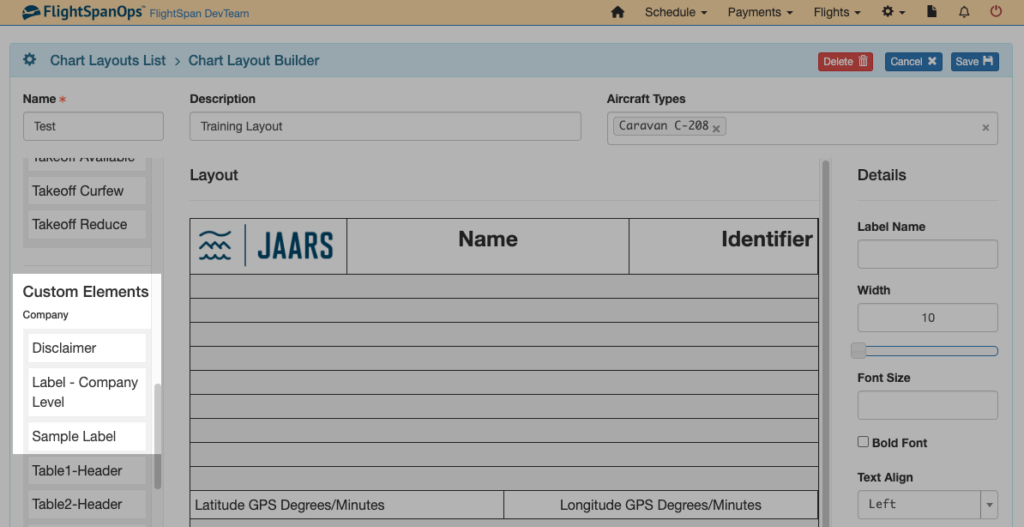
Video Version
